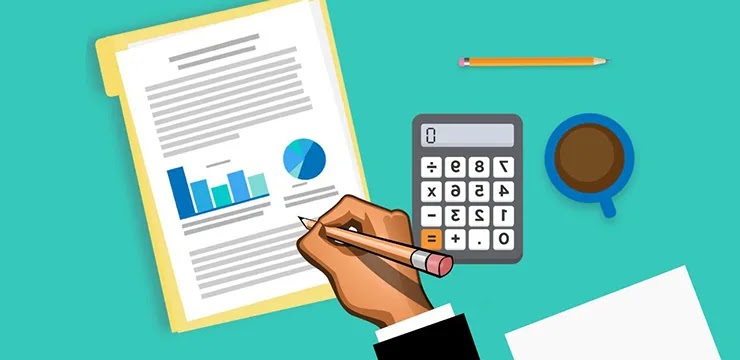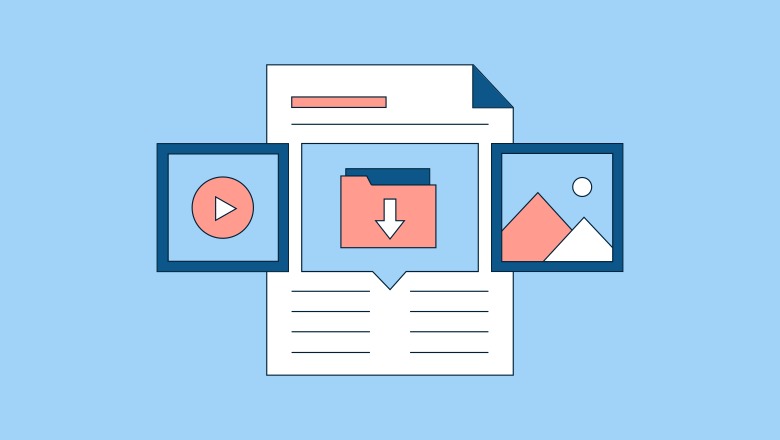Hello!
There’s something that we’ve been seeing a lot with B2B marketing – businesses making an oversized B2B content marketing strategy mistake… like rental truck drivers who don’t see the “low bridge” sign and go full speed ahead.
Maybe you have also fallen hook, line, and sinker for the B2B content marketing strategy narrative pushed online.
 You’ve focused on the top of the funnel (because that’s where the journey starts). And you’ve created a lot of amateur (*cough*) content that leaves your real potential customers scratching their heads. Now, after no leads or sales, it looks like this content marketing stuff is a sham.
You’ve focused on the top of the funnel (because that’s where the journey starts). And you’ve created a lot of amateur (*cough*) content that leaves your real potential customers scratching their heads. Now, after no leads or sales, it looks like this content marketing stuff is a sham.
We can make you this promise: It isn’t. You just have to know how to do it right.
In this article, we’ll look at how to make B2B content marketing work and generate genuine leads you can count on to become real customers.
The Top-of-Funnel Myth
Many B2B content marketing strategies revolve around the top-of-funnel and the blog post. It’s easy to claim success when it’s measured in traffic growth and engagement alone, not sales.
Now, don’t get us wrong. The top of the funnel matters. You do have people who are just learning (the newbs who haven’t leveled up yet).
But are you spending too much time and money here and seeing diminishing returns? Then, like visiting your in-laws, you could be wearing out your welcome and missing out on time spent with the people who get you.
 People are already hanging out at the bottom of the funnel at any given moment. They already know what they need and why they need it. They just need a reason to buy now, buy from you, and spend more.
People are already hanging out at the bottom of the funnel at any given moment. They already know what they need and why they need it. They just need a reason to buy now, buy from you, and spend more.
All the while, you’re hyper-focused on generating awareness, demand, and consideration with potential customers who will take months (years) to get where these high-intention decision-makers already are.
It doesn’t make a lot of sense to us either.
Let’s generate high-intention leads with a B2B content marketing strategy that captures this low-hanging fruit before trying for the unripe stuff on the highest branches.
Target High-Intent Searches (Bottom of Funnel)
Let’s flip this script in our B2B Content Marketing Strategy and prioritize BoF when you create a piece of content. If the bottom of the funnel stays “ripe for the picking,” you may spend a lot of time here.
Focus on ranking for the bottom-of-funnel terms your research shows your potential customers use to find your product.
These will be competitive – but they’re that way for a reason. And with the right B2B content marketing strategy, you’ll find your competitive advantage here.
Why You Should Prioritize the Bottom of the Funnel
 This is money you don’t want to leave on the table. It’s potential revenue growth now, not later, not long-term.
This is money you don’t want to leave on the table. It’s potential revenue growth now, not later, not long-term.
Right now – when you need to increase cash flow to invest in growing your company.
A US Bank study found that 82% of businesses that fail do so because they lack cash flow. In many cases, they prioritize long-term potential customers while ignoring people who are ready now.
How to Own the Bottom of the B2B Funnel
Here’s the bottom line: You need to be visible in the “buy now” searches.
 To position yourself here, follow these steps within your B2B content marketing strategy:
To position yourself here, follow these steps within your B2B content marketing strategy:
- Identify your ideal potential customers. Research the verticals they look for, company size, job titles, etc.
- Find out the pain points they are trying to solve. They already know the problem, so don’t talk down to them in your blog post. Talk pain + solutions.
- Focus on why your solution is different or better than what the competition is offering. Hmm. See this blog post.
- Take competitors and failed “solutions” head-on. Your BoF audience has already been there, done that. It didn’t work. They don’t want to get burned again.
- Build pieces of content that revolve around what you’ve learned here within your B2B Content Marketing Strategy.
Do more than just use SaaS tools to identify the terms to target. Talk to your customer-facing employees (sales, customer care, market researchers, founders, etc.) to ensure you understand what your prospective customers are looking for.
These assets are unique to your operation. They are your B2B Content Marketing Strategy competitive advantage.
Now, go back to your SEO keyword research SaaS tools and start confirming what your customer-facing people already know.
Prioritize building pieces of content around these terms.
BoF Terms to Prioritize in Your B2B Content
BoF marketing for B2B content marketing shouldn’t rely on consumer-focused terms like “buy” and “get”. High intention signals are more subtle.
 Do your own research, but BoF terms for SaaS may look like this.
Do your own research, but BoF terms for SaaS may look like this.
- User Function + Software (yours or your competitors)
- Top/Best + User Function + Software
- User Function + Industry Supported by Software + Software
- Industry + User Function + Software
Other B2B company BoF terms might follow a similar structure. So, say you’re a Global Medical Supplies Logistics Company targeting heavy medical equipment manufacturers.
- Heavy Medical Equipment Shipping + Your Company or Logistics Solution (or a competitor’s)
- Top/Best + Heavy Medical Equipment + Company or Logistics Solution
- Shipping Heavy Equipment + Healthcare + Company or Logistics Solution
- Healthcare + Heavy Equipment Shipping + Company or Logistics Solution
More BoF Keywords to Target
Look, more terms to target!
 These also tell you that decision-makers are in the final stages of selecting a company:
These also tell you that decision-makers are in the final stages of selecting a company:
- Competitor Brand vs. Competitor Brand
- Your Brand vs. Competitor Brand
- Competitor Brand + Alternatives (E.g., Hubspot alternatives. Just kidding. There aren’t many good ones.)
You don’t have to act objectively or impartially here. At the BoF, you’re talking to experts in their industry who have often tried big talk brands that didn’t deliver.
Be a straight-shooter with this audience. Why is your brand better? Be ready to back it up with real case studies.
Work Your Way Back in Your B2B Content Marketing Strategy
Like Lake Mead in 2022, your BoF supply will dry up if it’s not being replenished.
So, while you should prioritize Bottom of Funnel leads begging you to make them an offer, you need to work your way back to the middle of the funnel (MoF) and (ToF).
 So, let’s look at how your B2B marketing strategy works back.
So, let’s look at how your B2B marketing strategy works back.
Hit Their Pain Points (Middle of the Funnel)
43% of people 16 to 64 say ‘researching products and brands’ is the reason they use the Internet. They’re already aware of the problem. Now, they want you to fix it.
So, we’re going to target terms that communicate…
FYI, This kid is 40 now.
 So, what terms target pain points but communicate solutions?
So, what terms target pain points but communicate solutions?
- How-to (do this easier, better, faster, etc.) How-tos can be engaging short videos, blog posts, and even shareable email marketing emails.
- Timing Content. E.g., when to file S Corp taxes, best time to liquidate inventory
- How Much Content? E.g., how much does email marketing automation cost?
- Benefits Content. (Why) e.g., Benefits of a hybrid workforce
- Specific Content Formats. E.g., checklists, PDFs, videos, ebooks, templates, etc.
- The Specific Pain Point, E.g., scheduling employees, retaining customers, tracking shipments.
Creating and promoting high-quality, strategic pieces of content around these topics capture attention at a critical moment in the decision-making process. This person may not buy now, but they’re serious.
This isn’t someone bored and searching because they have nothing better to do. These are potential customers.
You can influence them in the right direction with the right message.
Differences in Content Strategy for B2B Service Businesses vs. B2B SaaS Businesses
 There’s a reason that SaaS businesses have exploded. What they do delivers instant gratification. In many cases, just download and get started. Once B2B SaaS Marketing generates awareness and points to potential customers, SaaS almost sells itself.
There’s a reason that SaaS businesses have exploded. What they do delivers instant gratification. In many cases, just download and get started. Once B2B SaaS Marketing generates awareness and points to potential customers, SaaS almost sells itself.
The SaaS business is also inherently scalable. Build the software once – and of course, you have to fix the bugs, provide support, and launch an upgrade once in a while. But you can sell almost infinite downloads, run a gazillion free trials at once at little cost to you, and upsell the premium version with little hands-on effort.
In these ways, SaaS is a whole lot more like B2C content marketing than its B2B counterparts.
B2B Service Businesses Are Clearly Different
For starters, B2B services – for instance, consulting or marketing – are usually more expensive. It’s a big ordeal for the B2B buyers trying to make a decision, and mistakes are expensive, if not detrimental.
To make matters worse, every “free trial” you offer costs your company time and money. So, you can’t give away a gazillion free trials. You don’t have the capacity, and the ROI isn’t there.
To work with these challenges instead of fighting against them, you have to build a lot of trust upfront. Can your B2B content marketing strategy do that?
 Additionally, most companies in need of B2B services have multiple decision-makers. You don’t only have to build trust with one person. Many people have to agree to choose you.
Additionally, most companies in need of B2B services have multiple decision-makers. You don’t only have to build trust with one person. Many people have to agree to choose you.
As icing on this cake of challenges B2B service companies face, a service customer’s pain points are nuanced. One-size-for-all solutions don’t work.
So, you have to be able to listen and communicate with them, not just B2B but expert to expert. Is that E2E Marketing? (Unfortunately, E2E’s already taken by the SaaS industry.)
With experts, you have to prove you know your stuff well enough to listen and build your service around the customer, not the other way around.
Is your B2B content marketing strategy doing this?
In service marketing, the goal is not just to make people aware. Your focus is building trust through content.
When you do, the sky’s the limit!
Set Sales Up for Success
 If a lead gets to a sales rep before this trust is built, you’re probably wasting that commission-based employee’s time — pure and simple. You’re impacting their ability to meet sales quotas and provide for their family.
If a lead gets to a sales rep before this trust is built, you’re probably wasting that commission-based employee’s time — pure and simple. You’re impacting their ability to meet sales quotas and provide for their family.
And at the end of the day, these overworked employees will leave.
But enough about the problem. What’s the solution? Building trust before the sales handoff with B2B marketing.
Building Trust with Your B2B Content Marketing Strategy
We have established the importance of prioritizing the BoF in B2B content marketing. And we’ve looked at why it’s even more important if you’re a B2B service business.
So, how can we build a B2B Content Marketing Strategy that prioritizes the BoF and builds the trust a high-caliber sales rep can use all day long to close deals?
Speak Expert to Expert
Recognize that your target audience knows a thing or two about their industry and probably yours too! This isn’t their first rodeo. So, you don’t have to spell out everything for them.
Give them some credit, and don’t overexplain the ABCs of what you do. Get to the meat of how you solve their problems.
Leverage Delighted Customers
 Because you focused on the BoF in your B2B content marketing strategy, you have customers who were relatively fast and easy to acquire.
Because you focused on the BoF in your B2B content marketing strategy, you have customers who were relatively fast and easy to acquire.
You didn’t play the long game. But now you have the resources to do so. Incorporate these customers directly into your B2B Content Marketing Strategy to build trust with others.
There are several ways to do this.
Encourage Reviews
87% of people are willing to write you a review if you just ask them. 92% of B2B buyers say a trusted review influences their decisions.
Strategically place these reviews on landing pages and near CTAs to generate social proof of your reliability and expertise.
Do In-Depth Case Studies
Next, tell the stories of your long-term customers. This shows they keep coming back and staying with you. What you do for customers works.
 Go in-depth into how the service you provided delivered measurable results. Demonstrate through customers that you are trustworthy. You have a track record of delivering results.
Go in-depth into how the service you provided delivered measurable results. Demonstrate through customers that you are trustworthy. You have a track record of delivering results.
Welcome User-generated Content
Encourage customers to share pictures, videos, experiences, collaborative projects, and more related to your company.
Give them a platform to do this through vital B2B social media platforms, Facebook and LinkedIn.
Also read:
- 5 Of The Biggest Email Vulnerabilities
- Benefits of Traveling on Trans-Canada Train
- 5 Ways to Improve Communication with Staff Augmentation Teams
Promote Content
And finally, don’t forget about promoting content like this. You must get this trust-building BoF content in front of the right people.
Your content promotion strategy should include a mix of building an organic online presence in search engines, social, and email inboxes and around the Internet. Put paid search and paid social are also critical components for getting the eyes of potential customers this BoF content.
Your B2B content marketing strategy should outline your approach to getting the most out of these types of content.
Thank you!
Join us on social media!
See you!






